Back in 2018, David Vickery explained the visual effects work for Jurassic World: Fallen Kingdom. He then worked on Battle at Big Rock and Jurassic World: Dominion. Today he talks about his first collaboration with visionary director James Cameron on Avatar: The Way of Water.
What was your feeling about being part of the Pandora universe?
It was such a huge mixture of emotions. Avatar was one of those films that made a huge mark on the world when it first came out. I still remember hearing people talking about their experience of working on that film, and how challenging it was. James Cameron is a really definitive director who knows exactly what he wants. He has incredibly high standards and hence high expectations of the people that work with him.
ILM worked on the first Avatar with John Knoll as our supervisor. John is a legend, and he is one of the reasons that I wanted to work at Industrial Light and Magic. So, for me, picking up the helm for ILM’s work on the sequel, stepping into John Knoll’s shoes and working with James Cameron, Joe Letteri, and Weta FX was a really interesting challenge. There was a huge amount of anticipation on my part. I was incredibly excited, and knew there were going to be some major challenges ahead of us.
There were some amazing sequences that we were being asked to deliver. The level of detail that had gone into the previs (or Templates as they called them) and the planning and execution of the shots in those sequences was absolutely second to none. The real time rendering of the templates was beautiful. There was a huge level of excitement and anticipation and a healthy amount of respect for the work that we were taking on!
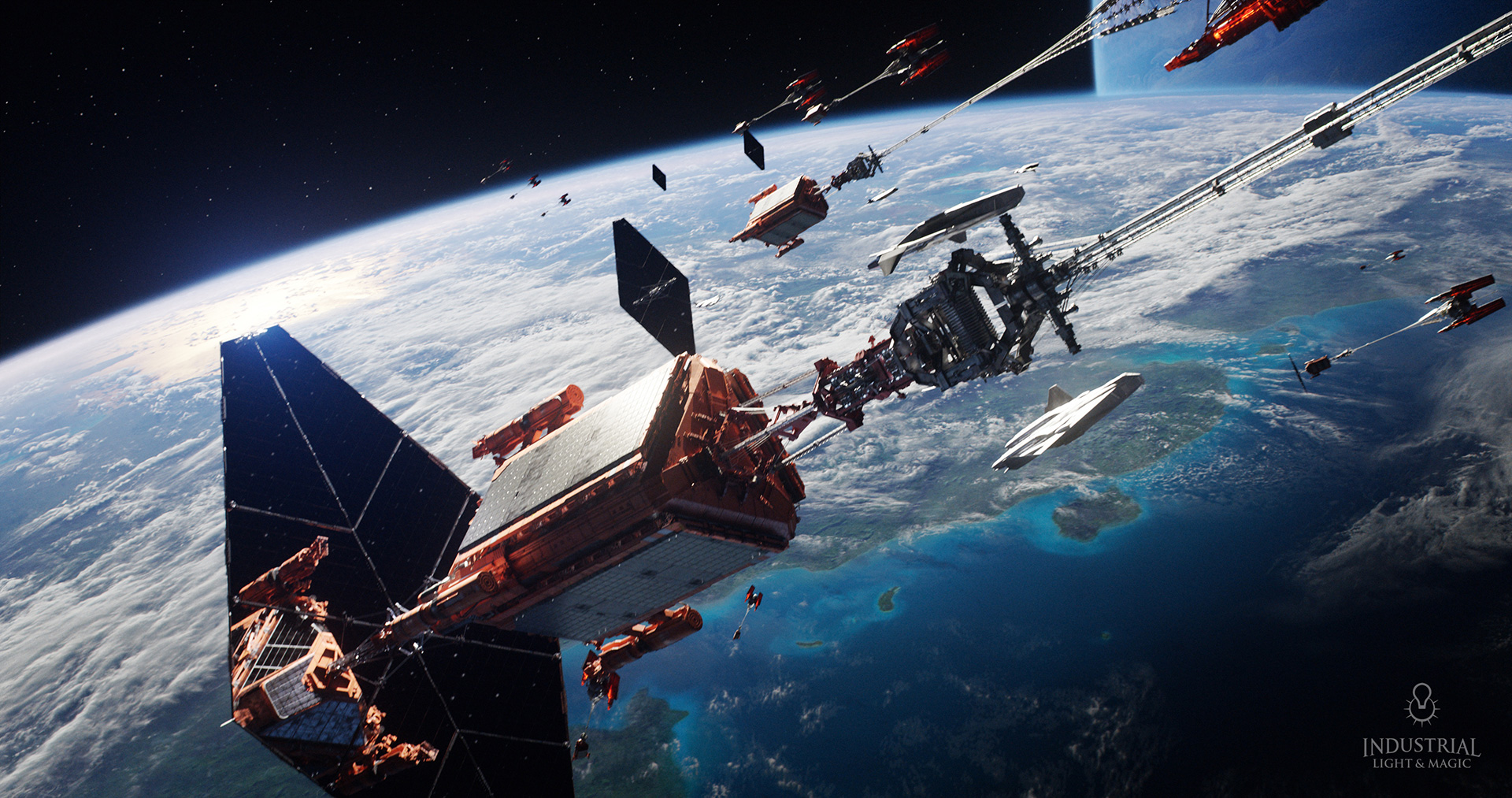
Can you tell us what ILM did on this show?
We picked up work on four sequences. 48 shots in total. The shots focused on the return of humans to Pandora. The arrival of the Manifest Destiny and the fleet of ships approaching and landing on Pandora.
As the Manifest Destiny lands, its antimatter annihilation engines literally raze the ground, the ships thrusters burning and creating a circular perimeter on the surface of Pandora and destroying everything in its path. ILM created all the shots approaching the planet, the Manifest Destiny landing and the resulting fireballs that tear through the landscape with a tsunami of fire and death that consumes everything.
The second sequence we worked on depicted Quaritchs’ arrival on the Garuda at Bridgehead. The Garuda is the shuttle-like ship that transports him from their landing zone over to Bridgehead, which is a huge human port that’s under construction on the planet’s surface. We also worked on a flashback sequence featuring young Spider at Hells Gate and Spider in the interrogation room, the very first shot movie, and a number of shots with the humans flying through Pandora’s floating mountains.
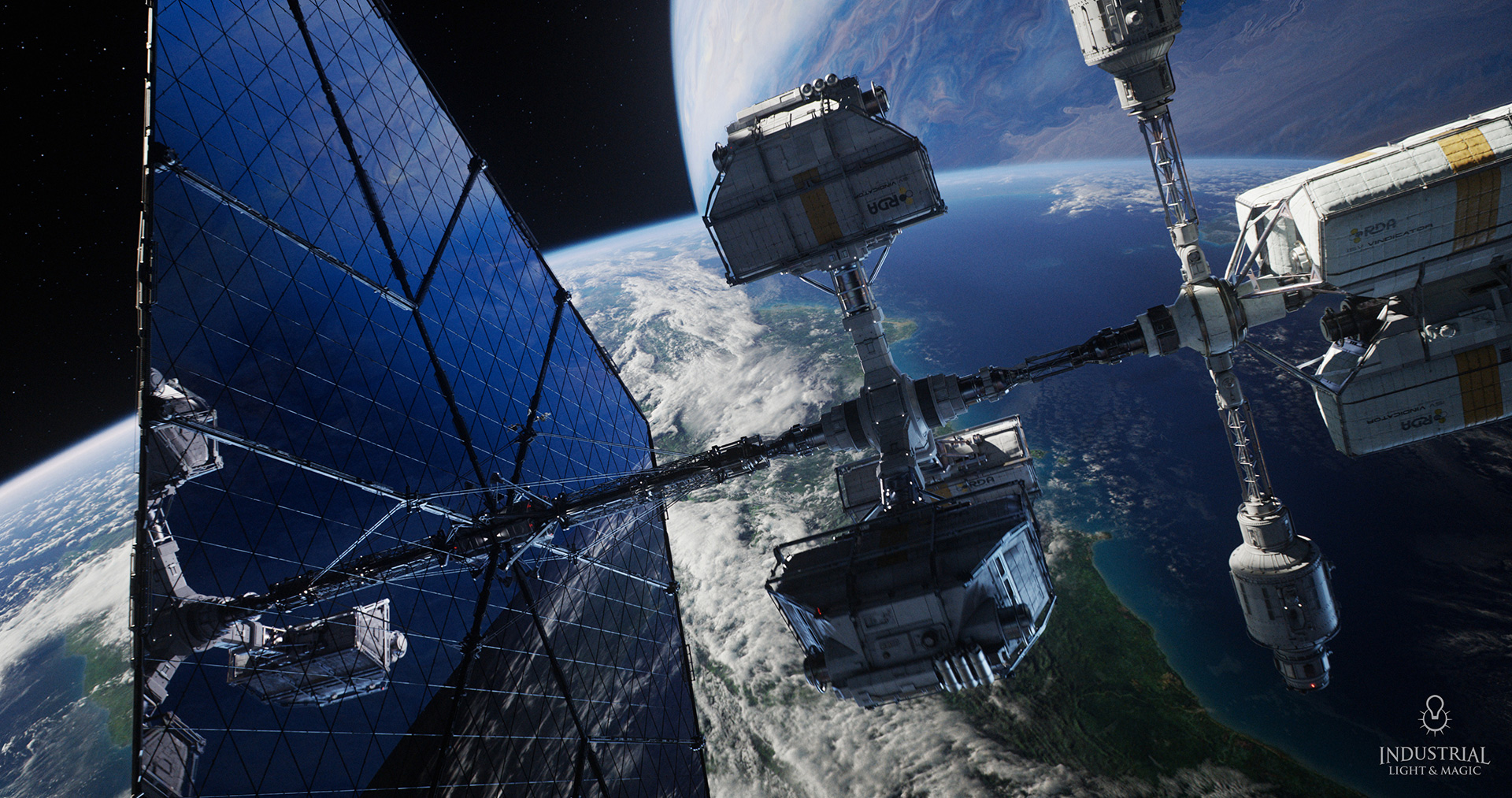
Can you elaborate on your collaboration with Lightstorm?
We worked very closely with Richie Baneham; Lightstorm’s Visual Effects Supervisor. Ritchie and his team shot pretty much the entire movie with Jim Cameron at Lightstorm using virtual production tools. This process produced incredibly accurate templates for all of the shots in the film. Jim cut his movie with those shots and then they turned those shots over to Weta FX. Weta extracted all of the data from the shot templates and baked it down for us into their post-pipeline so that they could then hand it to us in a meaningful format.
The key thing with the templates was that Jim, Richie, the production designers and DOP spent a lot of time putting them together. The motion choreography, camera work, lighting, atmospherics and FX elements were all incredibly deliberate and considered, even down to the length of shadows and how they played across the landscape. Jim was so confident in his templates that we worked with no head or tail handles on any of our shots. The templates of the shots were exactly that – templates and we needed to match them precisely whilst making the shots photo-real and looking for any way we could plus them out.
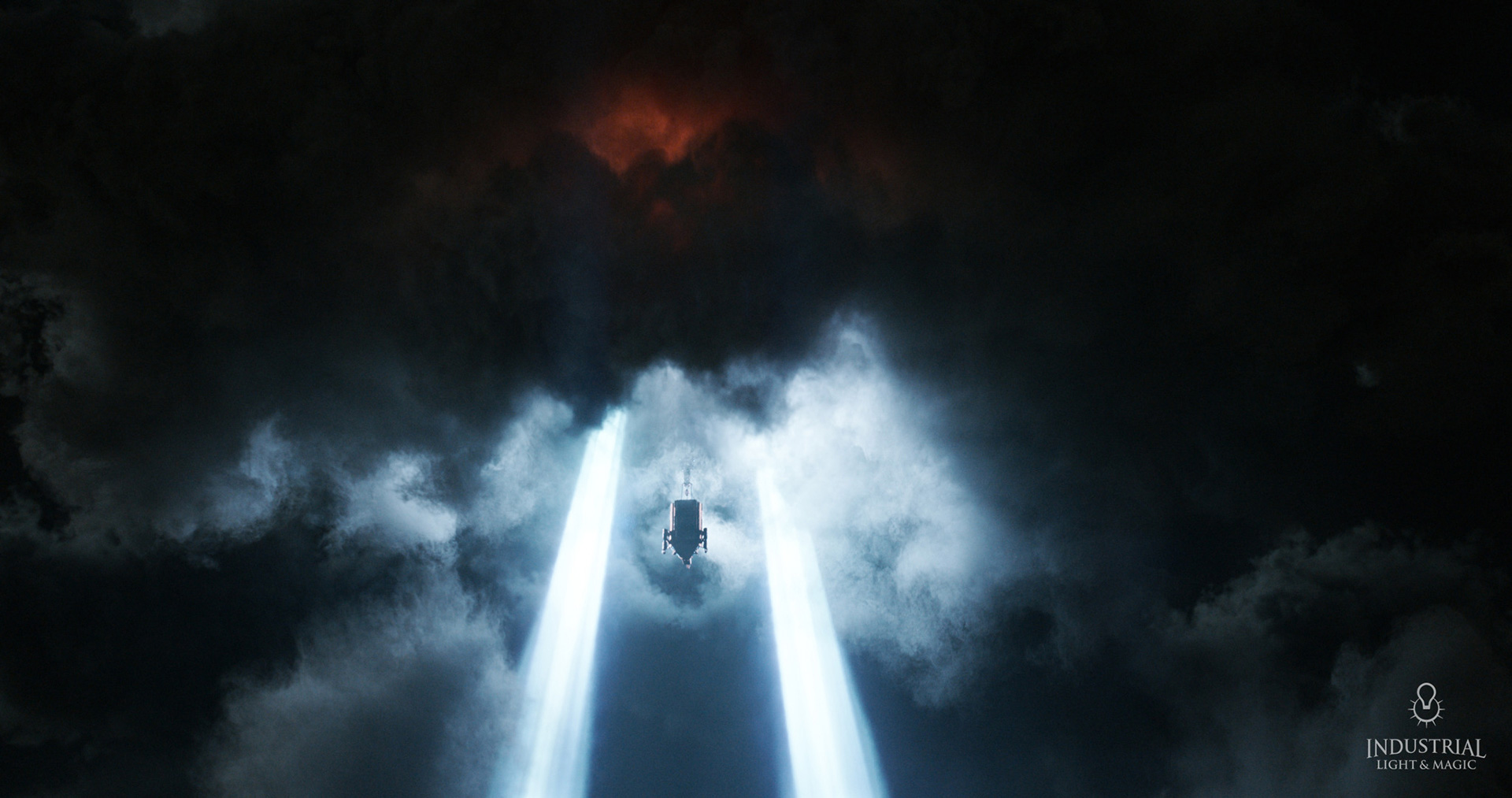
How did you handle this really short schedule?
It was a challenging but exciting schedule given the complexity of work. I imagine that Weta had been working on the show for three or four years by the time ILM joined. ILM didn’t start the work on the project in earnest until mid August 2022, and we delivered it in December 2022. So it was about 18 weeks from start to finish. Around 36 of our 48 shots were full CG, 4K stereo and sometimes at 48 frames a second. We were able to work in our own pipeline at ILM but we inherited a lot of finalled assets from Weta FX so we had to come up with a clever way of sharing seamlessly between the two studios. ILM’s 48 shots required over 650 unique assets. Ships, creatures, human characters, weapons, guns, buildings, plants, trees and many many props. All of those assets were instanced thousands of times in some of the shots.
I looked at one of the shots in the burning forest and counted over 187 unique animals in the environment alone. Each one of those animals played a part and told a story. In order for us to present anything to Jim, we first had to rebuild the templates of the shots and make sure we hadn’t missed anything.
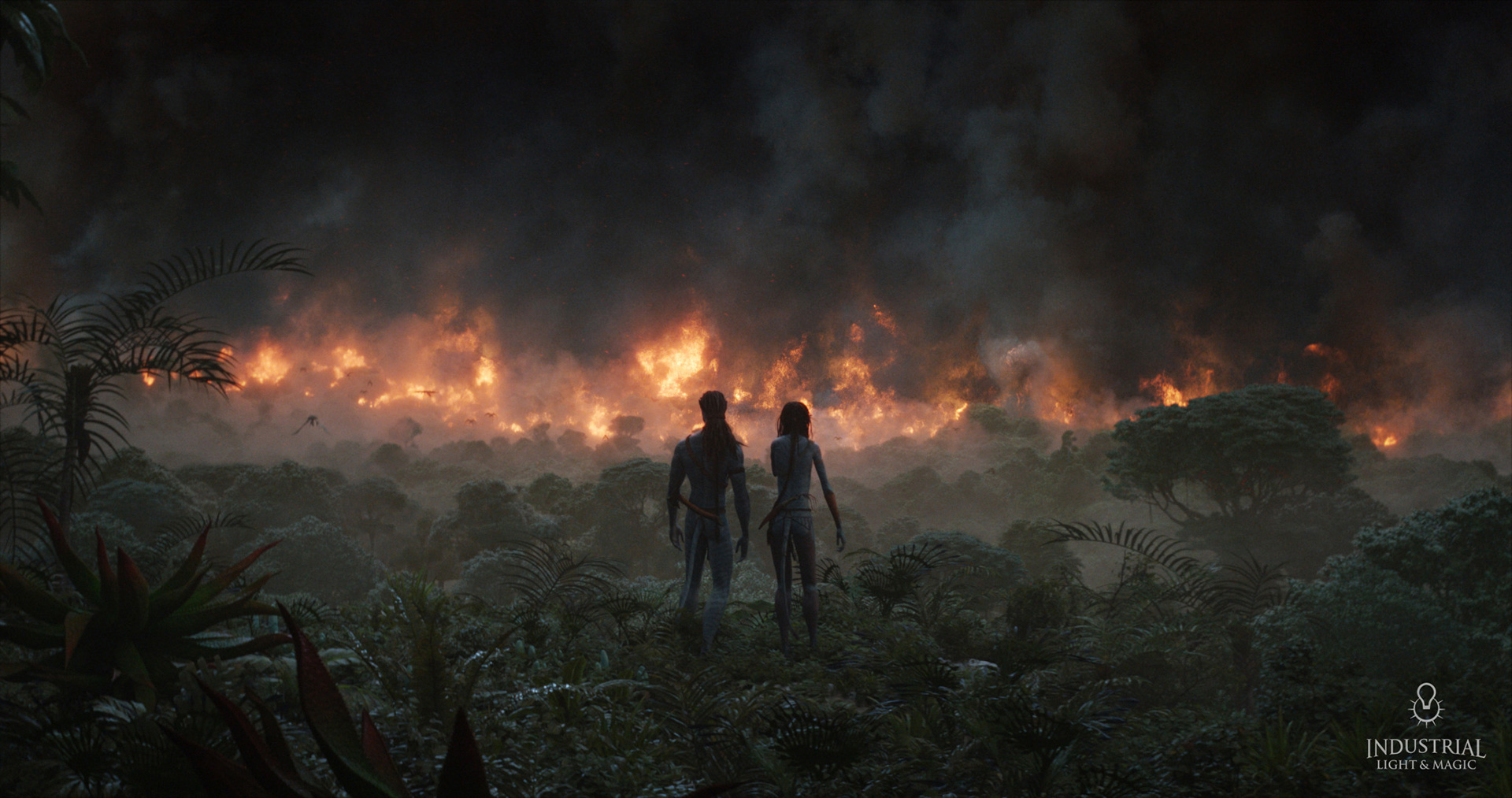
Apart from James Cameron, was your main contact Joe Letteri or Eric Saindon?
I had a couple of calls with Eric early on in the project but didn’t speak to Joe until the bakeoff. With Eric I really wanted to get his advice, find out how he had been working with Jim so far and understand how we could fit seamlessly into their existing review process.
Twice a week, we would do a creative review with Richard Baneham, a separate review with Jon Landau and a third set of reviews with the show’s production designers, Ben Procter and Dylan Cole. Richie is an animator by trade, so in his reviews he would give us great feedback on the storytelling and animation of the shots. When we talked with Jon Landau he would think more in terms of whether we’re matching the template. He would look out for things in the shots that didn’t match or were missing and would question why it had changed. This could be as simple as having moved a light 3 feet to the left when compared to the template. It seems overly controlling, but you have to remember that more often than not – Jim set the lights in the shot. If you were on a live action stage, you wouldn’t move a light that the director has set without being told to. So unless we had a good reason, why would we move a digital light?
When we spoke with Dylan Cole and Ben Procter they were laser focused on the assets and environments. They would look at the textures, wear and tear, and dirt on the ships. The materials choices that we were using in our sets and the language that our design choices gave to the world they were building were a key feature of those reviews.
It felt like a lot of people needed to look at the work with us, but they were each giving us unique and individual perspectives on the shots. By the time we got to a review with Jim our shots had all the familiar visual language that he had come to expect. All of the feedback and input from his producer, his visual effects supervisor and his production designers had been rolled into our work. It was a very effective system!
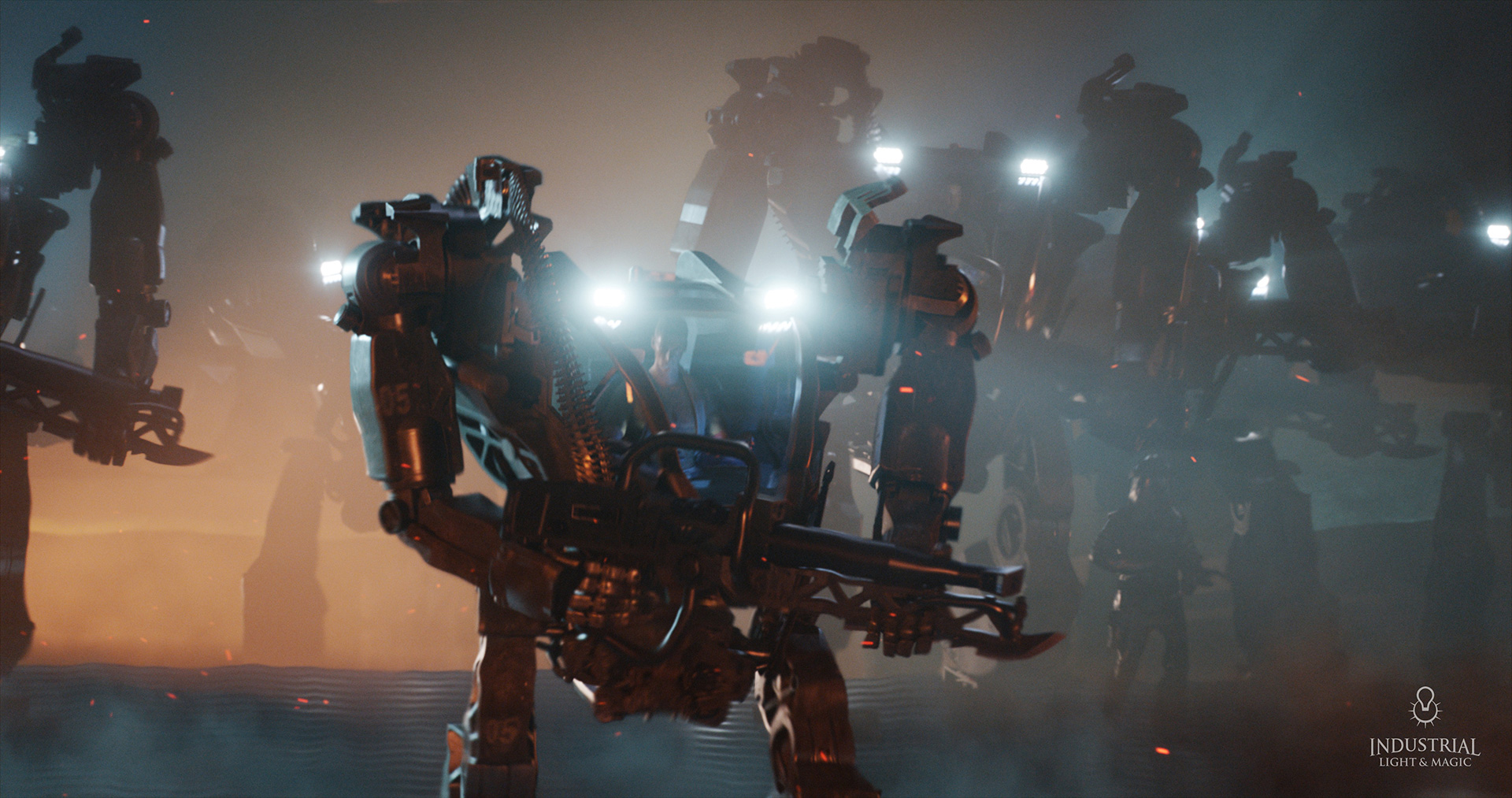
Were you able to use some of the asset from the first Avatar?
There were a number of assets that were repurposed and upgraded from the original Avatar; mainly the creatures. For example, the Hammerhead, the Thanator and the Ikran were all upgraded and repurposed. It’s been a long, long time since the first film came out. So they all needed quite a bit of work to make them stand up to our modern techniques and expectations.
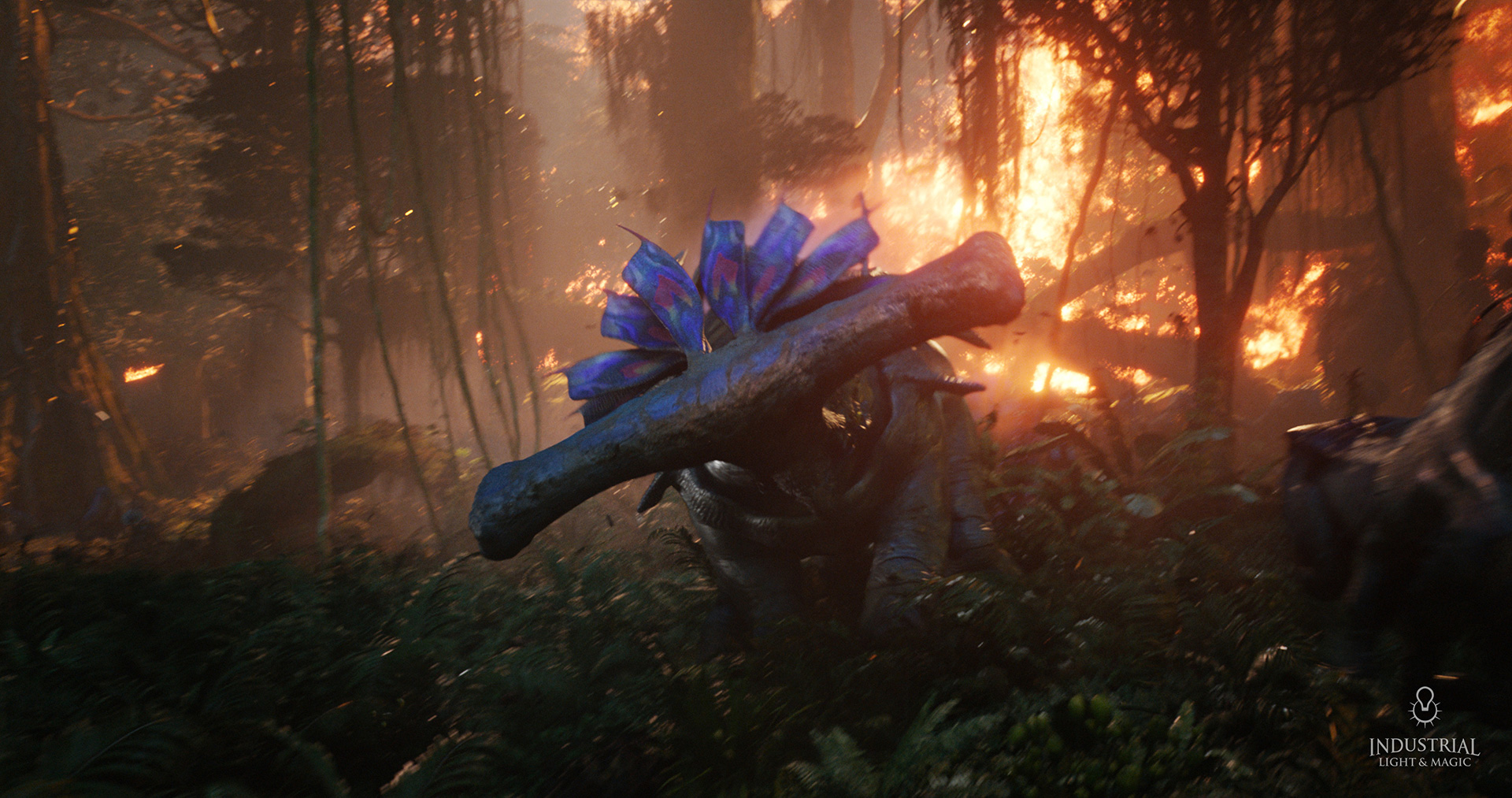
James Cameron is known for his attention to detail. Can you tell us more?
The really great thing about Jim was that he told us exactly what he wanted in the shots. He was incredibly generous with his time. The first review we had with him lasted over three and a half hours… for 48 shots! He really knows what he wants, but was also very open to any ideas we had as to how to plus the shots out. He wanted ILM’s creative input in his film.
Jim is incredibly technically savvy. There’s one moment I remember from a review where we were looking at a shot of the Garuda landing. The Garuda can achieve vertical landing and take-off, very much like a Harrier Jump Jet. Jim told us great stories about True Lies and how when he worked on that movie, he had a real Harrier Jump Jet, so he wasn’t just interested in seeing FX simulations of engines. Instead he said we should work out how much the Garuda weighs, divide it by four (the Garuda has four engines), calculate the area of the thrusters where they contact the ground and work out the pounds per square inch of thrust that those engines are playing down onto the tarmac. Then we could use that to drive our simulations. He was always trying to think about how practical examples of real world things could feed into our simulations to make sure that we were being honest, and respecting the science and the reality of the real world.
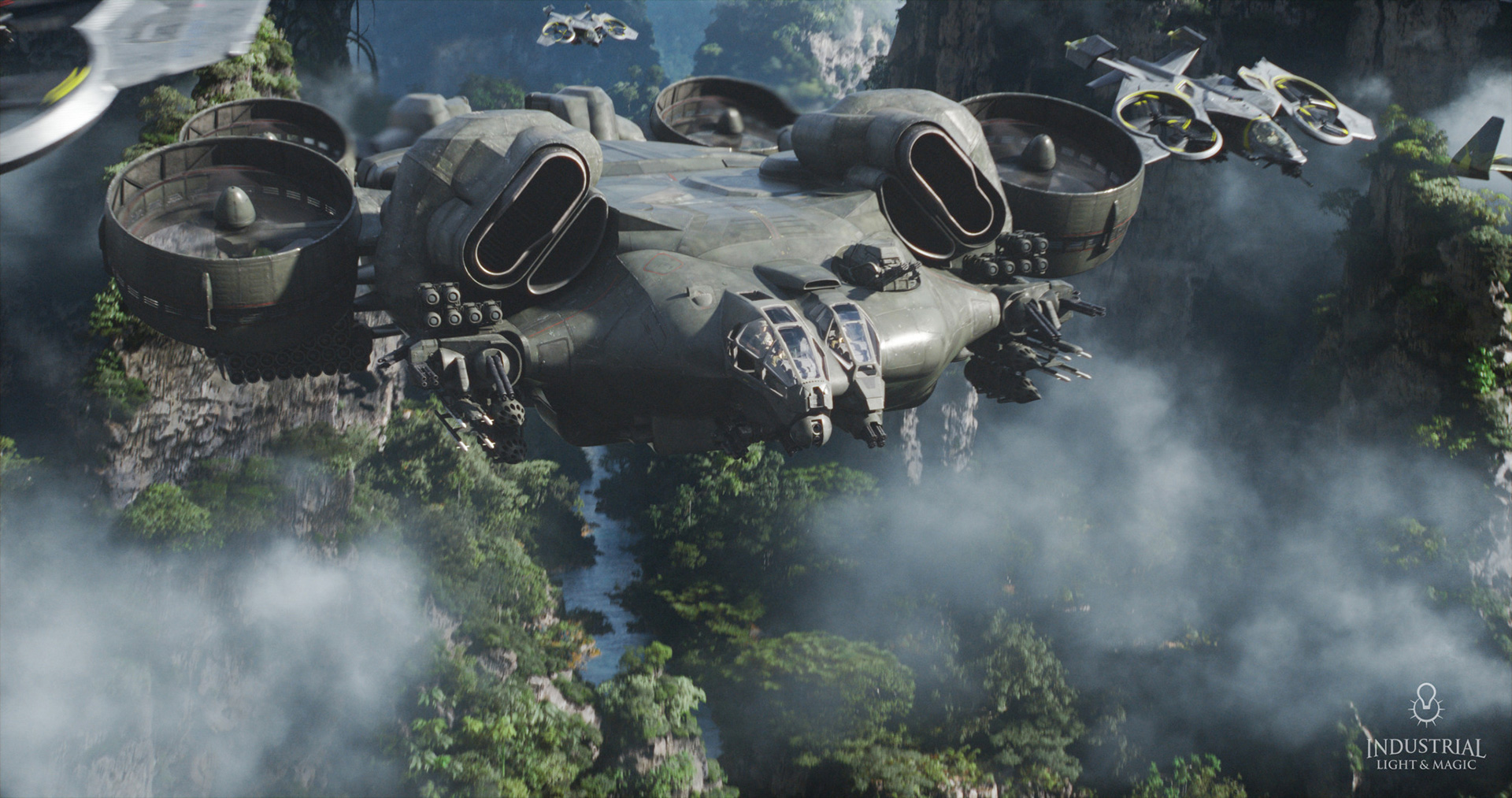
And I’ve just one last question. What did you enjoy the most while working on this film?
We had so many amazingly rewarding reviews with Jim. One of the biggest shots we had to work on was the landing of the Manifest Destiny. As the ship landed it created a rolling tidal-wave of fire and destruction that ripped the Pandoran landscape to shreds; A pretty terrifying shot to conceive and to work on. One of our very talented CG supervisors, Miguel Perez Senent, started work on the effects and put together a first version of the shot. When I saw it I was blown away, it was the first version I’d seen, a slap comp of his effects and it looked great so I thought we should see how Jim would react to it. Turning around versions on those sorts of simulations can take weeks so I didn’t want to second guess what I thought Jim would and wouldn’t like. So we put it up for review.
Jim’s first reaction was priceless. “Oh my God,” he said. “This is amazing. Hang on, hang on. Everyone stop, I need to get closer, I need to feel the burn”. He walked down to the front of the cinema and he sat in front of the screen, and watched the shot a few times on loop. Then he said, “Whoever the ILM artist was on this is, they have a really good handle of the dynamics. You’re done, dude. It’s going into the movie.” He literally finalled the shot there and then. We were able to tell him that Miguel was on the call and Jim spoke to Miguel directly to compliment him on his work. It was really amazing to interact with Jim in that way, to really be part of his creative process and have such an immediate contribution to the film.
Then I had to tell Jim that we couldn’t final the shot because it was just a slap comp, needless to say, I got a lot of flack for that! [Laughs]. For me personally, working with Jim and learning from him was a real career highlight for me.
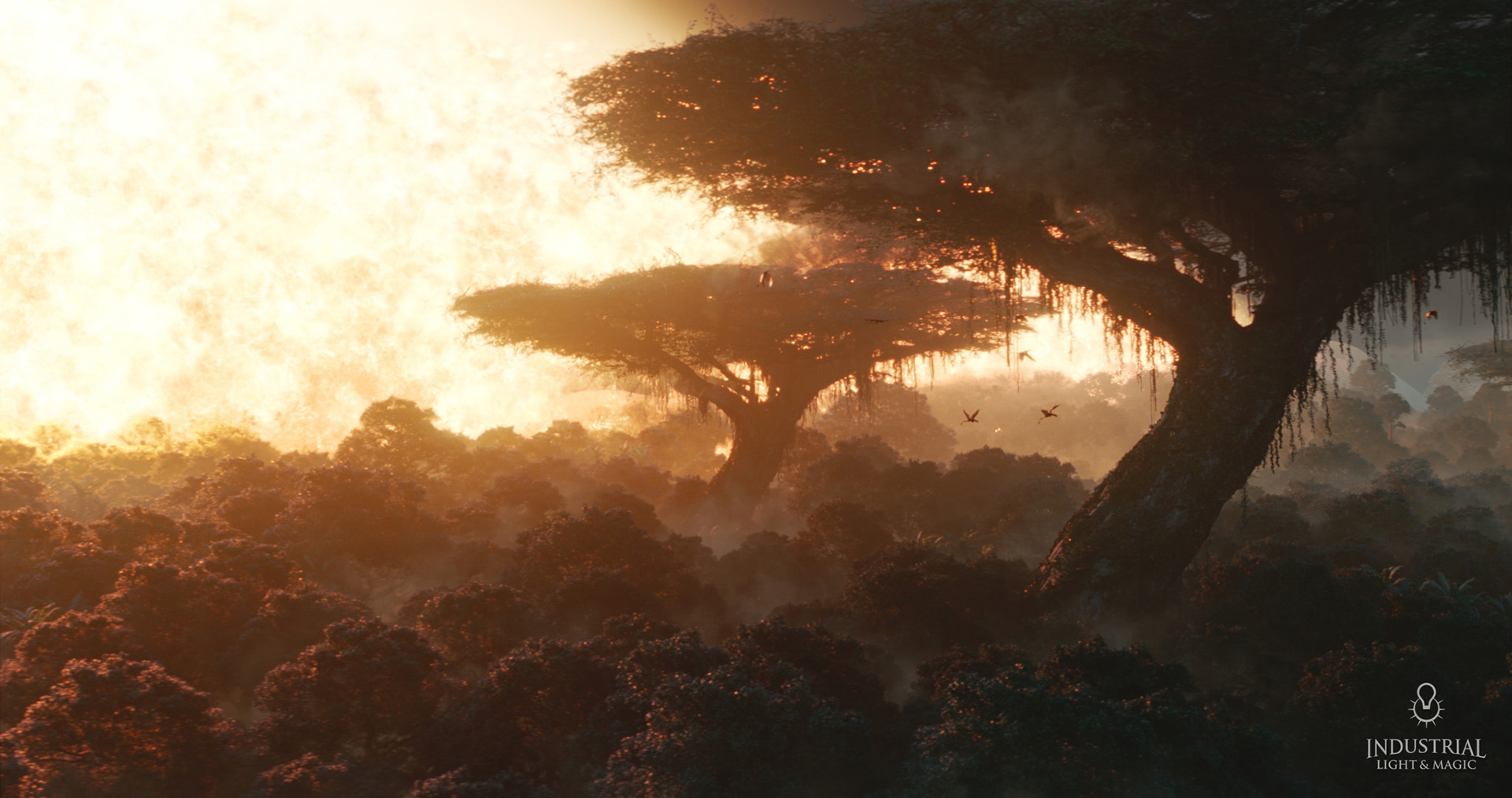
A big thanks for your time.
WANT TO KNOW MORE?
ILM: Dedicated page about Avatar: The Way of Water on ILM website.
Eric Saindon: Here is my interview of Eric Saindon, VFX Supervisor at Weta FX, about Avatar: The Way of Water.
© Vincent Frei – The Art of VFX – 2023





